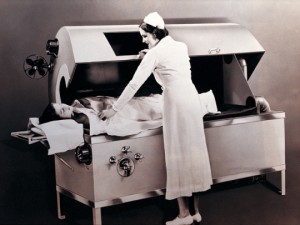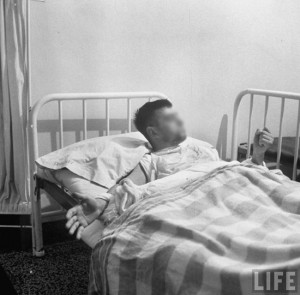In a general sense, patients at asylums were always an experiment in progress. Most alienists didn’t understand why people became insane, and didn’t really know how to cure insanity. Moral therapy, a relatively benign treatment, relied on the idea that a disciplined, busy schedule with plenty of sympathetic conversation, would take patients’ minds off their troubles and help them synch back up with society. Except for the situation itself (being in an insane asylum), this therapy was a fairly gentle attempt to help patients. Many, who perhaps only needed a change of scenery or some diversion to break a melancholy train of thought, probably did benefit from this therapy.
Some twentieth century therapies were more extreme. The last stages of syphilis produced symptoms of insanity, and the condition was usually called “syphilitic insanity.” Doctors infected patients with malaria, hoping the high fever would stop syphilis’s progress. Julius Wagner-Jauregg won a Nobel prize for this therapy. Another leading psychiatrist gave schizophrenic patients high doses of barbiturates to induce deep sleep as a treatment. Another treatment for schizophrenia was insulin shock, in which doctors injected patients with large doses of insulin to produce comas. This therapy was used until the 1950s.
______________________________________________________________________________________


